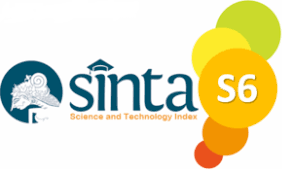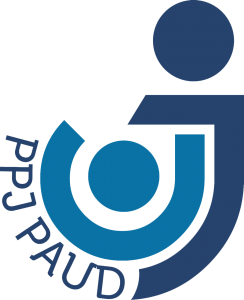Pola Pengembangan Pembelajaran Bahasa Indonesia untuk Anak Autisme
Indonesian Language Learning Development Patterns for Children with Autism
DOI:
https://doi.org/10.37680/absorbent_mind.v3i2.4340Keywords:
children with autism, development patterns, Indonesian language learningAbstract
The aim of this research is to analyze the development patterns of Indonesian language learning for children with autism. This type of research is a literature review. Data collection method with documentation from Google Scholar. Data analysis using a systematic literature review. The pattern of developing Indonesian language learning for children with autism needs to be prepared with a special approach that takes into account their individual characteristics and needs. It is important to align learning strategies with the sensory preferences of children with autism, such as the use of visuals and repetition of material. Technology integration can be an effective tool to facilitate learning, while observing a clear and consistent structure in teaching. Support from teachers and an inclusive environment are also key elements in creating learning patterns that support the progress of Indonesian in children with autism.
References
Abidin, Z., Fatonah, I., & Septiyana, L. (2019). Pola Pengembangan Potensi Kecerdasan Emosional Dan Spiritual Anak Penyandang Autisme. AWLADY: Jurnal Pendidikan Anak, 5(2), 95–116.
Agustina, I., Siregar, L. A., Husain, D. L., Asfahani, A., & Pahmi, P. (2023). Utilization of Digital Technology in Children’s Education to Enhance Creative and Interactive Learning. At-Tarbawi: Jurnal Pendidikan, Sosial Dan Kebudayaan, 10(2), 276–283.
Ardiati, L. (2018). Pembelajaran Dengan Bermain Puzzle Dalam Mengembangkan Kemampuan Kognitif Anak Autis Di Autis Centre Kota Bengkulu. IAIN Bengkulu.
Dewi, I. S., Harahap, I. A., Lubis, N. A., Sari, N., Arriba, F., Harahap, A. B., Dalimunthe, A., & Sembiring, J. B. (2023). Peran Orang Tua Dalam Menangani Ekolia Pada Anak Autisme. Jurnal Pendidikan Dan Konseling (JPDK), 5(1), 1987–1991.
Faizy, C. B., Lestari, R. W., Roviat, D. D., & Bagaskara, G. A. (2023). Model Pengajaran Untuk Anak Autisme Dalam Proses Pembelajaran Bahasa Indonesia Pada Kelas Homogen Antarjenjang Di Slb Tunas Mulya Surabaya. Jurnal Education And DevelopmeNT, 11(2), 150–154.
Fitri, N. L., & Ulya, V. F. (2022). Kontrol Pola Asuh dalam Mengembangkan Kemampuan Literasi Dasar Anak Autis di Kota Tuban. EL Bidayah: Journal of Islamic Elementary Education, 4(2), 213–227.
Hakim, L., Wulandasri, M. D., & Darsinah, D. (2022). Pola Perkembangan Anak Berkebutuhan Khusus Yang Bersekolah Di Sekolah Inklusi. Jurnal Ilmiah Wahana Pendidikan, 8(11), 411–416.
Hamidah, H., & Nugroho, P. A. (2023). Perkembangan Neuropsikologi pada Anak dengan Gangguan Spektrum Autisme: Tinjauan Terhadap Aspek Kognitif, Emosional, dan Interaksi Sosial. JIM: Jurnal Ilmiah Mahasiswa Pendidikan Sejarah, 8(4), 5486–5493.
Krisnawati, N., & Asfahani, A. (2022). Penggunaan Media Aktual dalam Pembelajaran Akidah Akhlak untuk Kelas Bawah MI/SD. BASICA: Journal of Primary Education, 2(1), 16–28.
Kurniawansyah, E., Fauzan, A., & Tamalasari, E. (2021). Pola Pembelajaran pada Anak Autis di SLB Negeri 1 Sumbawa. CIVICUS: Pendidikan-Penelitian-Pengabdian Pendidikan Pancasila Dan Kewarganegaraan, 9(1), 11–17.
Mirza, R. (2016). Menerapkan Pola Asuh Konsisten Pada Anak Autis. Jurnal Tarbiyah, 23(2).
Noach, Y. M. C., Noach, G. M. C., & Amseke, F. V. (2021). Pola Komunikasi Orang Tua Terhadap Anak Autis Di Kelurahan Oebufu. Ra’ah: Journal of Pastoral Counseling, 1(2), 71–82.
Puspaningrum, C. (2010). Pusat Terapi Anak Autis di Yogyakarta. UAJY.
Sari, N. (2016). Pola pelaksanaan bimbingan dan konseling untuk mengoptimalkan kemampuan anak autis di sekolah dasar. JBKI (Jurnal Bimbingan Konseling Indonesia), 1(2), 31–35.
Sari, Y. A. (2023). Hubungan Pola Asuh Orang Tua Dengan Kemampuan Kosa Kata Pada Anak Autis Usia Sekolah Dasar Di SLBN Bangkinang Kota Tahun 2022. SEHAT: Jurnal Kesehatan Terpadu, 2(2), 20–29.
Sulistyowati, H., Mayasari, D., & Hastining, S. D. (2022). Pemerolehan Kosa Kata Anak Autism Spectrum Disorder (ASD). Jurnal Obsesi: Jurnal Pendidikan Anak Usia Dini, 6(4), 3091–3099.
Ulfa, R. A., Asfahani, A., & Aini, N. (2021). Urgensi Orang Tua dalam Pembelajaran Daring di Masa Pandemi Covid-19 bagi Siswa RA. Absorbent Mind: Journal of Psychology and Child Development, 1(02), 24–31.
Ulva, M., & Amalia, R. (2020). Proses pembelajaran matematika pada anak berkebutuhan khusus (autisme) di sekolah inklusif. Journal on Teacher Education, 1(2), 9–19.
Wahyuni, F., & Asfahani, A. (2021). Menjadi Orang Tua Kreatif bagi Anak Usia Dini di Masa New Normal. Absorbent Mind: Journal of Psychology and Child Development, 1(1), 1–11.
Wijaya, N. C., Suryawati, I., & Pradipta, A. D. (2017). Pola Komunikasi Guru di Yayasan Peduli Autisme Bali dalam Meningkatkan Interaksi Sosial Anak Autistik. E-Jurnal Medium, 1(1).
Wijayanti, L. M. (2021). Penguasaan Fonologi dalam Pemerolehan Bahasa (Studi Kasus pada Anak Usia 1.5 Tahun). Absorbent Mind: Journal of Psychology and Child Development, 1(1), 12–24.
Downloads
Published
How to Cite
Issue
Section
License
Absorbent_mind; Journal of Psychology and Child Development allow the author(s) to hold the copyright without restrictions and allow the author(s) to retain publishing rights without restrictions, also the owner of the commercial rights to the article is the author.
License:
- Attribution: You must provide an appropriate name, include a link to the license, and certify that changes have been made. You can do this in an appropriate manner, but do not imply that the licensor supports you or your use.
- Share Alike: If you compose or make derivatives of these materials, you must distribute your contributions under the same license as the original materials.
- No additional restrictions: You may not use legal provisions or technological means of control that legally restrict others from doing the things this license allows.
You are free to:
- Share, copy, and redistribute this material in any form or format.
- Adapt, modify, and create derivatives of this material for any purpose, including commercial purposes.
- The licensor cannot revoke the above terms as long as you comply with the terms of this license.
Creative Commons Attribution-ShareAlike 4.0 International License (CC BY-SA 4.0).






